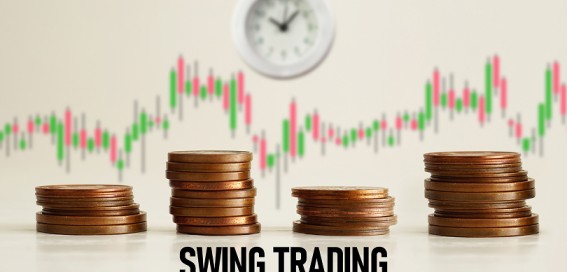The upper & lower circuits were introduced in India in 2001. These levels refer to maximum percentage rise or fall in the price of a particular stock or index for a trading session on a day. These price bands are set every day to prevent traders from extreme volatility in the stock markets i.e. steep hike/ drop of a share price each day. The stock markets function each day according to the upper & lower circuit which forms a range for circuit breaker, as per the stock prices on the last traded day. Let’s deep dive & understand this very important concept of circuit breakers in the stock markets.
Topics Covered
- What are Circuit Breakers
- Types of Circuit Breakers
- What is an Upper Circuit & How an Upper Circuit Works
- What is a Lower Circuit & How a Lower Circuit Works
- What is Circuit Filters & How it Works
- Circuit Breaker Rules and Regulations
- Advantages of Circuit Breakers on Trading
- Circuit Breaker Rules for Algorithmic Trading
- Understand Market Volatility & there Types
- Investor Psychology During Circuit Breakers
- Conclusion
What are Circuit Breakers
A circuit breaker is primarily an investor protection measure by SEBI. The circuit breakers are automated to halt trading when the stock market experiences extreme volatility i.e. sudden and severe price declines or increases. The main function of circuit breakers is to prevent panic selling or buying.
Types of Circuit Breakers
- Market-wide circuit breakers
- Single-stock circuit breakers
– Market-wide circuit breakers
The market-wide circuit breakers are triggered at three stages of the index movement such as at 10%, 15% and 20%. These are triggered by movement at either the BSE Sensex or the Nifty 50, whichever happens first.
– Single stock circuit breaker
It is triggered by movement in particular stock. For example: Several Adani stocks hit lower circuits in February & March 2023. Trading was halted nationwide in order to check manipulation of stock prices.
Recommended Read:Credit opportunities funds work
What is an Upper Circuit & How an Upper Circuit Works
An upper circuit is the maximum price rise that is permitted for a stock or index during a trading session. Once a stock hits the upper circuit, trading in that stock is halted for a few minutes or for the rest of the day. Basically the upper circuit also indicates that there are only buyers and no sellers in the market. The primary triggers for upper circuits are a sudden surge in demand or positive news about a company or the market. Upper circuits can have a positive impact on the market, as they can create a positive sentiment among investors and traders.
What is a Lower Circuit & How a Lower Circuit Works
A lower circuit is the maximum percentage decline permitted for a stock or index during a trading session. Once a stock hits the lower circuit, trading in that stock is halted for a few minutes to the rest of the day. The primary triggers for lower circuits are negative news about a company or the market, or a sudden surge in supply. Lower circuits can have a negative impact on the market, as they can create a negative sentiment among investors and traders. Lower circuits indicate that there are all sellers and no buyers for the stock.
What is Circuit Filters & How it Works
Circuit filters, also known as price limits, are a mechanism used by stock exchanges to limit the price movements of individual stocks or indices. Circuit filters are used in conjunction with circuit breakers to manage price volatility and reduce the risk of sudden and sharp price fluctuations. The sudden & sharp price movements can be caused by a variety of factors, including market sentiment, news events, or changes in economic conditions.
Circuit filters work by setting upper and lower price limits on a stock or index. When price of a stock or index breaches the upper or lower limit, trading is halted. During this time, investors have the opportunity to reassess their positions and make more informed decisions.
Circuit Breaker Rules and Regulations
Securities and Exchange Board of India (SEBI) is responsible for implementing circuit breaker rules and regulations. SEBI ensures that circuit breakers are implemented in a fair and transparent manner. There are also global circuit breaker standards that aim to promote market stability and prevent extreme price movements.
Advantages of Circuit Breakers on Trading
Circuit breakers have several advantages for trading, keeping a check on market crashes, promoting market stability, and providing a cooling-off period for traders. Circuit breakers help prevent panic selling or buying and allow traders to make informed decisions. However, some traders also criticize circuit breakers for disrupting trading and causing market inefficiencies. Yet, a circuit breaker is a regulatory measure and it is good for stabilizing markets and indices and plays a role for fair trading sessions. As soon as a circuit limit is crossed, trading is stopped for some time, and keeps a tab on further damage on the bourses.
Recommended Read:Buy only what you understand
Circuit Breaker Rules for Algorithmic Trading
Algorithmic trading is a type of trading that uses algorithms to execute trades automatically. Circuit breakers can have an impact on algorithmic trading, as they may trigger certain pre-programmed trading strategies. Circuit breaker rules for algorithmic trading ensure that algorithmic traders do not take advantage of circuit breakers.
Understand Market Volatility & there Types
Market volatility refers to the degree of variation of a stock’s price over time. Typically, future volatility, historical volatility, forecast volatility, and implied volatility are four different forms of volatilities traders worry about. Circuit breakers help handle market volatility by providing a cooling-off period for traders, allowing them to reassess market conditions and make informed decisions. However, some traders criticize circuit breakers for being restrictive.
Investor Psychology During Circuit Breakers
Despite offering a cooling-off period to traders, a circuit breaker can have a major impact on the psychology of investors. In times of extreme market volatility, it is natural to experience feelings of fear, panic, and uncertainty. This can largely lead to irrational decisions. Circuit breakers help break this mental cycle and provide a sense of order and control to traders. The investors get some time to reassess their positions and make rational decisions. By providing a temporary halt to trading, circuit breakers also help reduce the sense of urgency that often drives investors to make impulsive decisions. Overall, circuit breakers help restore investor confidence and prevent the adverse psychological factors.
Conclusion
In all, understanding circuit breakers is essential as a trader. While they can be disruptive in the short term, they ultimately help prevent larger and more damaging market crashes. It’s important for investors to understand how circuit breakers work and to remain calm during periods of market volatility.

















